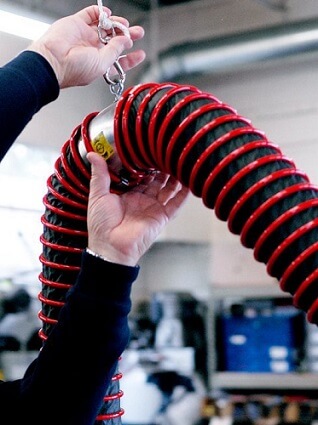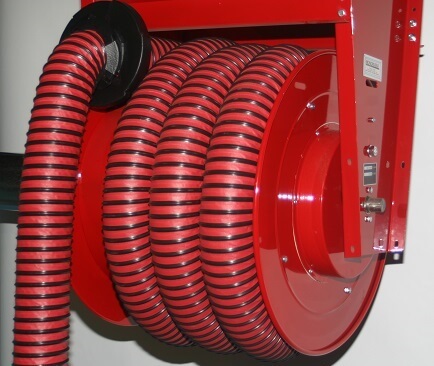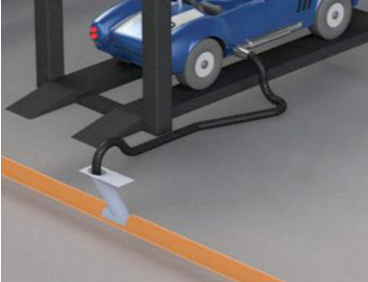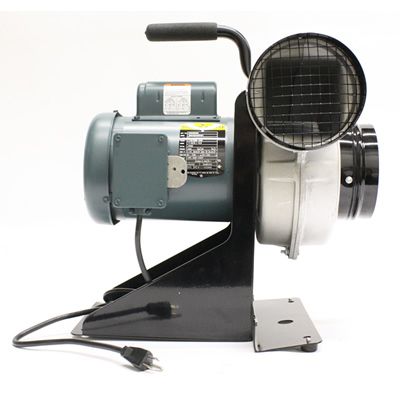Factors to Consider When Choosing an Exhaust Removal System
Choosing the right vehicle exhaust removal system guarantees that technicians and staff are protected against harmful emissions. These systems not only improve air quality but also maintain compliance with employee health and safety regulations. To maximize efficiency, it's important to choose a vehicle exhaust removal system that is designed to overcome the specific challenges your facility is faced with.
These challenges can be influenced by several factors, such as the size of the space, the type and number of vehicles being serviced, the amount of exhaust generated, the building layout, and local regulatory requirements. For large spaces with multiple entry and exit points, it is important to choose a system that can handle the volume of exhaust produced by many vehicles at once. On the other hand, smaller garages may opt for a simpler, direct capture system, which attaches directly to a vehicle's exhaust pipe to extract exhaust.
The number of bays and type of vehicles in your garage significantly influence what type of exhaust removal system is right for your business. Trucks and heavy-duty vehicles produce a large amount of exhaust and might require a more robust system than that used for smaller passenger vehicles or motorcycles.
The building layout also has an impact — for example, in a linear layout, all the workstations are aligned in a row with one end of the workshop leading directly to the other. In this type of layout, an overhead system might be the most effective because it draws exhaust out and away from the building. Because of the straight, unobstructed path, the overhead system can easily remove exhaust gases from all workstations.
For more complex layouts, you may need multiple extraction points, placed strategically where the most exhaust is produced. Overall, shop layouts are unique to the building and may not fall within the linear or complex categories. Fume-A-Vent offers a full range of solutions to accommodate almost any layout, ensuring improved air quality and a safer workspace.

Our line of exhaust removal systems are designed to handle the emissions from engines under various operating conditions, as well as most other application demands. Exhaust fumes can quickly reach harmful concentrations, particularly from cold or intermittently run engines (when run indoors without exhaust ventilation). Fume-A-Vent systems use an at-source capture method to prevent any risk of exposure. Capturing emissions at the source minimizes air movement, reduces energy usage, and helps establish safe, breathable air. The at-source method ensures exhaust emissions produced by vehicles, such as carbon monoxide, nitrogen oxides, and particulate matter, are effectively captured and exhausted away from the building.
The approach of connection to a vehicle, exhaust gas temperature, system range, and engine size are all factors that have to be considered when selecting an exhaust removal solution. Because at-source capture covers almost every vehicle exhaust removal system, we've put together an overview of the most popular:

Fixed Systems
Fixed systems include any exhaust removal solution that requires installation to extract fumes from the work area. These types of overhead solutions are commonly used in facilities with large workloads where various applications are performed at the same time throughout the shop.
| • Spring Hose Reels | • Articulating Boom Arms |
| • Motorized Hose Reels | • Rope & Pulley Overhead System |
| • Pivoting Boom Arms | • Spring Balancer Overhead System |

Sliding Systems
Sliding systems feature fixed hose reels and trolleys that are installed on a rail system to reach specific repair areas within a garage. Sliding systems for exhaust removal are typically constructed of light-weight material and ball bearing wheels making them easy to move and service several work bays.

In-Ground Systems
In-ground systems are virtually unseen and are typically used in environments where applications happen occasionally or to reduce overall space usage. In-ground systems are best-suited for new vehicle repair shops, in the planning stage, with the ability to design in-ground pipework.
There are two different types of in-ground systems:
• On-floor systems in which a lid on the floor is opened and a hose-kit is attached to the extraction outlet when in use. After completion, the exhaust hose is removed and stored in a separate area.
• Under-floor systems store the vehicle exhaust hose underground and a technician pulls it up when needed and pushes it back down after task completion.

Portable Exhaust Removal Systems
Portable or mobile extraction systems are designed for small-scale facilities where space is at a maximum. They do not require fixed piping and are made adjustable to fit a variety of exhaust pipes.
Portable exhaust removal systems utilize a hose that ranges between 50 and 300 feet.
Assess your space, how many bays there are, the vehicles you service, and any applicable regulations to make an informed choice. Whether it's a simple hose-based system, an overhead system, or a centralized extraction unit, the right exhaust removal system will significantly improve the air quality in your workspace, contributing to the health and safety of technicians and staff.
Consider not just the cost but also the efficiency and effectiveness of the system. An investment in a quality exhaust removal system can save you from potential health and safety hazards and legal issues. Contact our specialists to learn more or to get started on your free quote.
You may also like:


